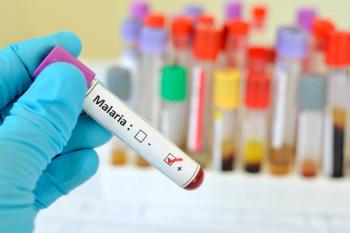
Preliminary Data Show Over One-Third of Patients With Psychiatric Diagnoses Visit ED After GLP-1 Initiation
Key Takeaways
- Over one-third of patients with pre-existing psychiatric diagnoses had psychiatric emergency visits within 60 days of starting GLP-1 treatment.
- FDA reviews found no definitive link between GLP-1 medications and suicidal thoughts, but caution is advised due to mixed data.
A recent study reveals a significant number of patients with psychiatric histories experience emergency visits after starting glucagon-like peptide-1 (GLP-1) medications, raising safety concerns.
Among patients with a pre-existing psychiatric diagnosis who started treatment with a glucagon-like peptide-1 (GLP-1) receptor agonist, more than one-third had a psychiatric emergency department visit within 60 days of GLP-1 initiation, according to preliminary study findings presented at the American Association of Psychiatric Pharmacists (AAPP) 2025 Meeting.1
GLP-1 Medications and Risk of Suicidal Thoughts or Actions
GLP-1 receptor agonists are FDA-approved for the treatment of type 2 diabetes and weight management and have garnered a huge amount of public interest. According to data from May 2024, 1 in 8 Americans reported having used a GLP-1 agonist, with 6% currently using one of these medications. Furthermore, 43% of Americans with diabetes and 26% of those with heart disease reported using a GLP-1 medication, in addition to 22% of those with obesity or overweight.2
However, one concern with the use of GLP-1 medications is the potential association with suicidal thoughts or actions. This concern has been investigated by the FDA, although the information has been limited, and mental health often has multiple potential causes. In reviews of clinical trial data, FDA officials said they did not find an association between the use of GLP-1 medications and the occurrence of suicidal thoughts or actions. Because of the small number of suicidal thoughts or actions in both GLP-1 users and comparative control groups, officials said they cannot definitively rule out a small risk.3
Pharmacovigilance data are mixed, however, and confounded by varying methodologies and report bias. Large cohort studies do refute an association, according to the study authors, but the FDA still urges caution.1
The Latest Data
To further address gaps in the understanding of mental health and GLP-1 medications, investigators designed a retrospective cohort study using a large epidemiologic database. Participants include adults prescribed GLP-1 receptor agonists between 2017 and 2023, and extracted data will include demographics, prescription data, psychiatric diagnoses, and outcomes following initiation of any GLP-1 prescription. The primary objective is to assess the incidence of mood disorder diagnoses before, during, or shortly after GLP-1 receptor agonist initiation, and a secondary outcome is the incidence of psychiatric outcomes—suicide or suicidality, psychiatric hospitalizations, and psychiatric emergency department visits in GLP-1 users with or without prior mental health diagnoses of interest.1
Preliminary data presented at AAPP show that among 61,091 patients, the average age was 51 years, the majority were female (59.4%), most were White (90.8%), and patients had a mean body mass index of 39 (87.3% classified as obese, 77.2% with type 2 diabetes). Among those with a past psychiatric diagnosis, 51.6% and 59.3% had a pre-existing history of anxiety or mood disorder, respectively.1
Of those with a preexisting psychiatric diagnosis, 13.2% were psychiatrically hospitalized and 34.2% had a psychiatric emergency department visit within 60 days of initiating treatment with a GLP-1 receptor agonist. Importantly, this is preliminary data, and further evaluation will compare those without a pre-existing psychiatric diagnosis.1
Pharmacist’s Role
Pharmacists are at the forefront of medication management and patient counseling, making this emerging data on GLP-1 receptor agonists and mental health particularly relevant to their practice. As these medications gain wider use for diabetes and weight management, and as companies seek to expand their FDA-approved indications, pharmacists are uniquely positioned to identify patients potentially at higher risk for psychiatric adverse events or those with pre-existing mental health conditions.
Understanding the preliminary findings regarding increased psychiatric emergency department visits within 60 days of GLP-1 initiation in patients with a prior psychiatric diagnosis empowers pharmacists to proactively monitor these individuals, provide enhanced counseling on potential risks, and collaborate effectively with prescribers to optimize patient safety. This knowledge allows for more informed dispensing decisions and the implementation of strategies to mitigate potential harm, ultimately contributing to improved patient outcomes and a higher standard of pharmaceutical care.
REFERENCES
1. Bye K, Leloux M, Cole K, et al. The occurrence of mental health diagnoses in GLP-1 receptor agonist treated patients. Presented at: American Association of Psychiatric Pharmacists 2025 meeting. April 29, 2025. Accessed May 2, 2025. https://aapp.org/ed/meeting/2025/poster/620969-occurrence-mental-health-diagnoses-glp-1-receptor-agonist-treated
2. Montero A, Sparks G, Presiado M, Hamel L. KFF Health Tracking Poll May 2024: The Public’s Use and Views of GLP-1 Drugs. KFF. May 10, 2024. Accessed May 2, 2025. https://www.kff.org/health-costs/poll-finding/kff-health-tracking-poll-may-2024-the-publics-use-and-views-of-glp-1-drugs/
3. Update on FDA’s ongoing evaluation of reports of suicidal thoughts or actions in patients taking a certain type of medicines approved for type 2 diabetes and obesity. News release. FDA. January 30, 2024. Accessed May 2, 2025. https://www.fda.gov/drugs/drug-safety-and-availability/update-fdas-ongoing-evaluation-reports-suicidal-thoughts-or-actions-patients-taking-certain-type
Newsletter
Stay informed on drug updates, treatment guidelines, and pharmacy practice trends—subscribe to Pharmacy Times for weekly clinical insights.




